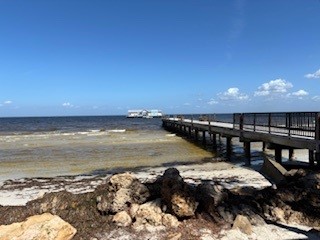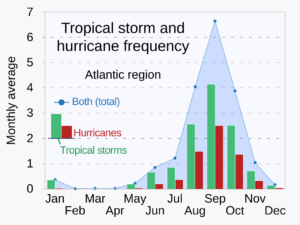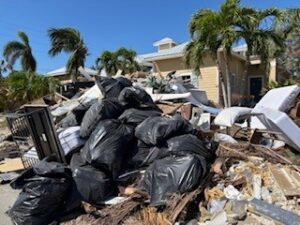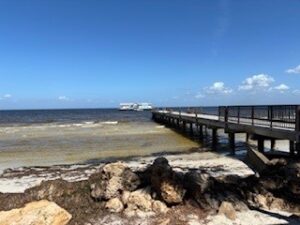Barrier islands serve a purpose in nature’s scheme, offering a barrier of sorts to the movement of storm surge and high tides to the continental mainland. In both the Southeastern U.S. and the Texas Gulf Coast, such islands abound, but we have often ignored the power of nature and developed those islands anyway. When we do, the quality and resilience of our buildings and infrastructure matter greatly, and the impacts of hurricanes make that abundantly clear.
Within the past two months, the barrier islands of Florida’s Gulf Coast, stretching from Fort Myers north to the Big Bend area where the peninsula meets the Panhandle, have taken a beating from Hurricanes Helene and Milton. Debris from the sideswiping impacts of Helene, which dumped most of its rain in the Blue Ridge Mountains of western North Carolina, was still plentiful along the Florida coast when Hurricane Milton came calling. Despite an order by Gov. Ron DeSantis authorizing 24-hour debris removal in affected areas, much of the debris was still in the streets and front yards when Milton made landfall at Siesta Key on Wednesday, October 9.
I have posted before about Planning to Turn the Tide, the film effort I am leading for the APA Hazard Mitigation and Disaster Recovery Planning Division, since late last year. I had scheduled an October 9 flight to Tampa International Airport for 11 a.m., arriving in mid-afternoon, to meet and work on that project with David Taylor, our videographer, who moved into a new home this past summer in Parrish, a growing suburban community northeast of Sarasota in Manatee County.
It was not to be. By the weekend of October 5-6, it was clear a new, large storm was forming off the coast of Mexico and heading mostly northeast toward the Florida Gulf Coast. At one point, it seemed to be targeting Tampa Bay, an area that has not suffered a direct hit from a hurricane since 1921. Hillsborough County, which includes Tampa, has for many years maintained a Post-Disaster Recovery Plan, outlining goals for rebuilding after a disastrous storm. The Tampa Bay Regional Planning Council, based in Pinellas Park but serving a multi-county metropolitan area of nearly 4 million residents, has strongly encouraged resilience planning in its member counties and municipalities. In conversations with regional and county planners before, they have always told me they see their century without a direct hurricane hit as sheer luck, not any sign that they are immune from such impacts.
They remained lucky again, for the most part, this year. Two years ago, Hurricane Ian swung east, away from Sarasota, and slammed Fort Myers and Fort Myers Beach instead. This time, Milton made landfall to the south, but that all that far south, and areas around Tampa and St. Petersburg suffered flooding and some wind damage, although the storm weakened to a Category 3 by the time it arrived. David’s house, built to the newest standards and well inland, emerged unscathed.
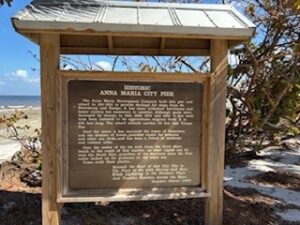 As for my trip, it happened exactly one week later. Tampa International reopened on Saturday, October 12, and I arrived on October 16, leaving a week later. On Tuesday, October 22, Dave and I drove out to Anna Maria Island, which is north of Siesta Key, a barrier island community due west of Sarasota. Dave mounted a drive-cam video camera in his front window, capturing the view of Anna Maria Island.
As for my trip, it happened exactly one week later. Tampa International reopened on Saturday, October 12, and I arrived on October 16, leaving a week later. On Tuesday, October 22, Dave and I drove out to Anna Maria Island, which is north of Siesta Key, a barrier island community due west of Sarasota. Dave mounted a drive-cam video camera in his front window, capturing the view of Anna Maria Island.
You can view the 18-minute video we distilled from that trip here.
There are parts of the island that will not be rebuilt, notably including the Rod & Reel Restaurant, which used to sit above the water at the end of a long wharf. The Anna Maria Pier was built more than a century ago, and the restaurant has benefited from decades of family ownership, but the wharf no longer reaches the badly damaged restaurant, which sits alone in the Gulf, unreachable. The rest of the wharf was obliterated, as was the Rod & Reel Pier, where locals used to enjoy fishing. No more.
Much still remains on the island. But some of it, inevitably, is gone. No more.
Jim Schwab
As for the HMDR film, we are still actively working on it. This blog post was delayed as I worked successfully to ensure that a grant proposal to support the project was submitted by an October 31 deadline. We can still use your support. If you are willing to help, you can donate here to contribute online at the APA website.
